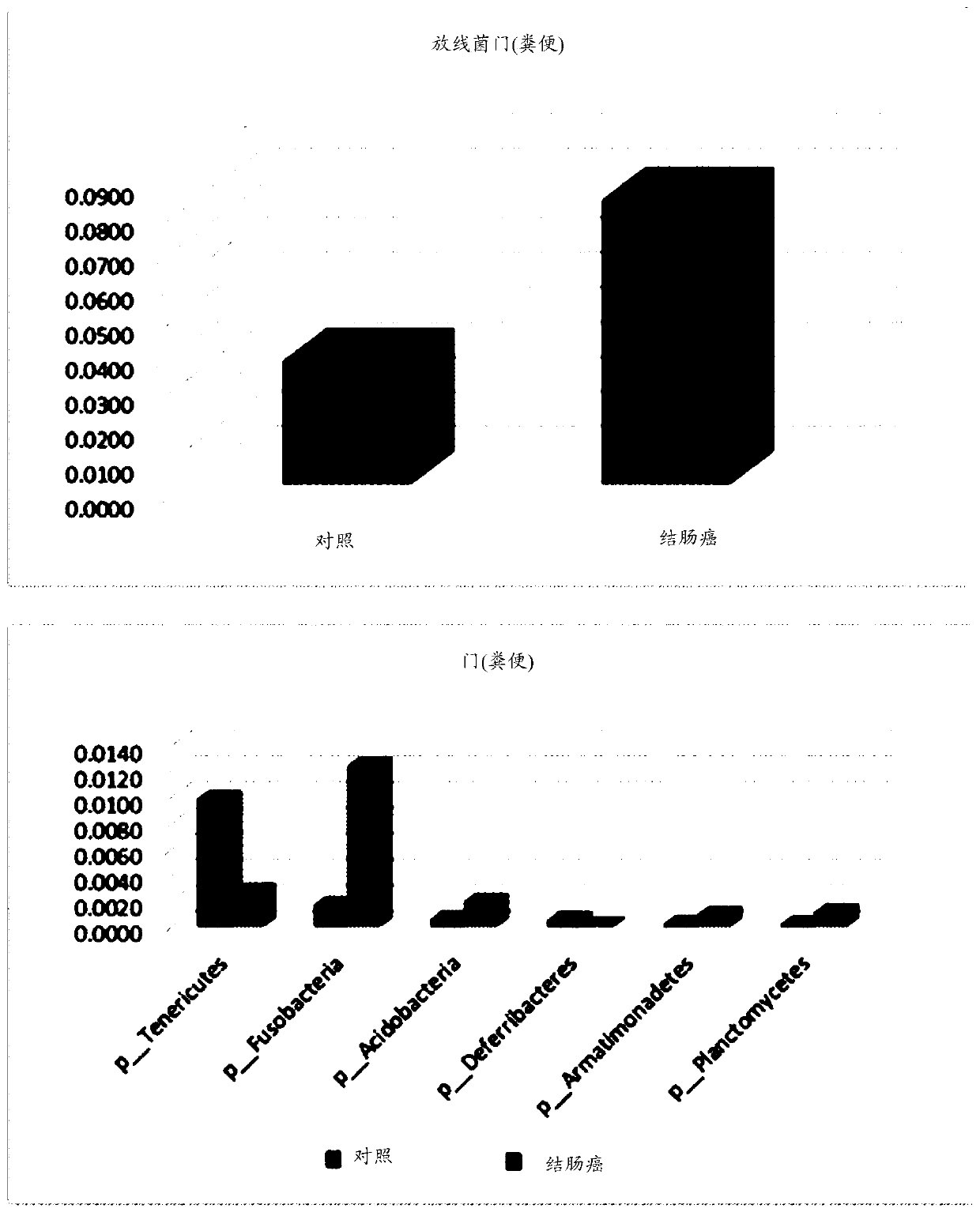Method for diagnosing colon tumor via bacterial metagenomic analysis
A technology for colon cancer and bacteria, applied in the field of diagnosing colon tumors, can solve problems such as undiagnosed colon tumors
- Summary
- Abstract
- Description
- Claims
- Application Information
AI Technical Summary
Problems solved by technology
Method used
Image
Examples
Embodiment 1
[0123] Example 1. Analysis of In vivo Absorption, Distribution and Excretion Patterns of Enterobacteria and Bacteria-Derived Extracellular Vesicles
[0124] [1] In order to evaluate whether enterobacteria and extracellular vesicles derived from bacteria are absorbed systemically through the gastrointestinal tract, experiments were performed using the following method. More specifically, 50 μg each of fluorescently labeled intestinal bacteria and extracellular vesicles (EVs) derived from the bacteria were orally administered to the gastrointestinal tract of mice, and were administered at 0 hours, and at 5 minutes, 3 hours, and 6 hours. Fluorescence was measured after 1 hour and 12 hours. As a result of observing the overall image of the mouse, such as Figure 1A As shown, the bacteria were not absorbed systemically at the time of administration, but EVs derived from bacteria were absorbed systemically 5 minutes after administration, and strong fluorescence was observed in the b...
Embodiment 2
[0126] [3] Example 2. Vesicle Isolation and DNA Extraction from Feces and Urine
[0127] [4] In order to isolate extracellular vesicles from feces and urine and extract DNA, feces and urine were first added to a 10ml tube, centrifuged at 3500×g and 4°C for 10 minutes, the suspension was pelleted, and only the supernatant was collected. Supernatant, put the supernatant into a new 10ml tube. The collected supernatant was filtered with a 0.22 μm filter to remove bacteria and impurities, then placed in a central centrifugal filter (50 kD) and centrifuged at 1500 x g and 4 °C for 15 min to discard material with a size less than 50 kD , and then concentrated to 10ml. Bacteria and impurities were removed again using a 0.22 μm filter, and then the resulting concentrate was subjected to ultracentrifugation at 150,000 × g and 4 °C for 3 h by using a 90ti type rotor to remove the supernatant and the aggregated precipitate Vesicles were obtained by dissolving with phosphate buffered sal...
Embodiment 3
[0132] Example 3. Metagenomic analysis using DNA extracted from vesicles in feces and urine
[0133] DNA was extracted using the same method as in Example 2, which was then subjected to PCR using the 16S rDNA primers shown in Table 1 to amplify the DNA, followed by sequencing (Illumina MiSeq sequencer). Output the results as a Standard Flow Diagram (SFF) file, and convert the SFF file to a sequence file (.fasta) and nucleotide quality score file using GS FLX software (v2.9), then determine credit ratings for reads, And parts with window (20 bps) average base call accuracy less than 99% (Phred score < 20) were removed. After removal of low-quality parts, only reads with a length of 300 bps or greater (Sickle version 1.33) were used, and for operational taxonomic unit (OTU) analysis clustering was performed using UCLUST and USEARCH according to sequence similarity. In particular, based on sequence similarity values of 94% for genera, 90% for families, 85% for objects, 80% for...
PUM
 Login to View More
Login to View More Abstract
Description
Claims
Application Information
 Login to View More
Login to View More - R&D
- Intellectual Property
- Life Sciences
- Materials
- Tech Scout
- Unparalleled Data Quality
- Higher Quality Content
- 60% Fewer Hallucinations
Browse by: Latest US Patents, China's latest patents, Technical Efficacy Thesaurus, Application Domain, Technology Topic, Popular Technical Reports.
© 2025 PatSnap. All rights reserved.Legal|Privacy policy|Modern Slavery Act Transparency Statement|Sitemap|About US| Contact US: help@patsnap.com



